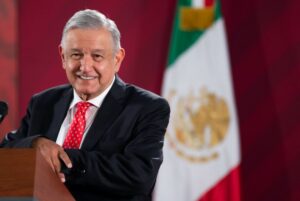
(Argus, 30.Dec.2019) — Possibly narrower differentials for sour crudes — under pressure from looming emissions regulations — could slow Ecuador’s repayment of its oil-backed debt and limit availability for spot market exports in the first half of 2020.
Ecuador produces heavy sour Napo and medium sour Oriente crudes. It owes about $355mn in oil-backed loans to Thailand’s PTT, according to the latest data from the Ecuadorean government. The country appears to have paid the monetary portion of debts to Chinese state-owned PetroChina and Unipec, but still owes a little less than 400mn bl of crude to PetroChina, Unipec and PTT under the contracts, the last of which expires in 2024.
This leaves Ecuador little volume available for spot exports in 2020 to generate additional revenue and help shrink the monetary portion of the debt. This may be exacerbated by changing market dynamics for sour crudes because of International Maritime Organization (IMO) regulations that will tighten allowed sulphur emissions from shipping fuels in January.
Latin American spot differentials for sour crudes, such as Colombian medium sour Vasconia and heavy sour Castilla, have largely been on a downturn since November as the crudes are being penalized for their high sulphur content, especially against sweet crude benchmarks such as Ice Brent and West Texas Intermediate (WTI). This has led to increasingly wider discounts for the crudes, and the same can be said for Ecuador’s Oriente.
PetroEcuador’s spot tender to sell 1.08mn bl of Oriente crude in the first quarter of 2019 garnered a $2.11/bl premium over WTI, while its 2020 spot crude tender only achieved a 71¢/bl premium to the benchmark. PetroEcuador is expected to export at least 1.44mn bl of Oriente in spot trade in 2020, to be split between four quarterly cargoes comprising 360,000 bl each, as part of a multi-year spot tender for the crude that was awarded to Shell at a 71¢/bl premium over WTI. The historic MR tender to sell roughly 20.2mn bl of Oriente between 2020 and 2024 received only three bids.
It is unclear if the state-owned company will have available Napo to offer into the spot market. PetroEcuador offered spot cargoes of Napo for the first time in five years in 2019, with a tender of 1.08mn bl of 17°API crude.
Through October, PetroEcuador exported 5.9pc more crude from a year earlier, at 100mn bl total, according to company data. Of this, about 60mn bl was Oriente at an average outright value of $58.72/bl and the remaining 40mn bl was Napo at an average outright price of $52.08/bl. The total so far is in line with the company’s initial target to export 328,700-356,000 b/d of Oriente and Napo crude in 2019.
But fragile political conditions can also always weigh on Ecuador’s export capabilities. Exports in 2019 fell to their lowest monthly total in October as Ecuador was forced to declare an 11-day force majeure after it suspended operations on its 360,000 b/d Sote crude pipeline in response to production shut-ins caused by violent protests. Ecuador’s oil output fell to just under 310,000 b/d on 8 October, according to oil regulator Arch, from 425,000 b/d a day earlier and 545,000 b/d on 1 October.
Normal volumes began flowing through the SOTE pipeline again on 19 October, allowing the resumption of exports. Unrest in Ecuador broke out on 4 October after the government of President Lenin Moreno lifted fuel subsidies. But on 15 October, after almost two weeks of protests, Ecuador’s government agreed to revoke the austerity decree that abolished fuel subsidies.
Turmoil was not limited to the domestic front for Ecuador in 2019 as the country decided to exit Opec. Quito joined Opec in 1973, but it suspended its membership in 1992, then reactivated it in 2007.
Ecuador’s Opec withdrawal, which takes effect on 1 January, allows the south American nation to push crude production beyond curtailment levels mandated by Opec and could generate additional volumes for spot sales.
By Monica Rojas
***


Grâce au programme de surveillance parentale, les parents peuvent prêter attention aux activités de téléphonie mobile de leurs enfants et surveiller les messages WhatsApp plus facilement et plus facilement. Le logiciel d’application s’exécute silencieusement en arrière-plan de l’appareil cible, enregistrant des messages de conversation, des émoticônes, des fichiers multimédias, des photos et des vidéos. Il s’applique à tous les appareils fonctionnant sur les systèmes Android et iOS.